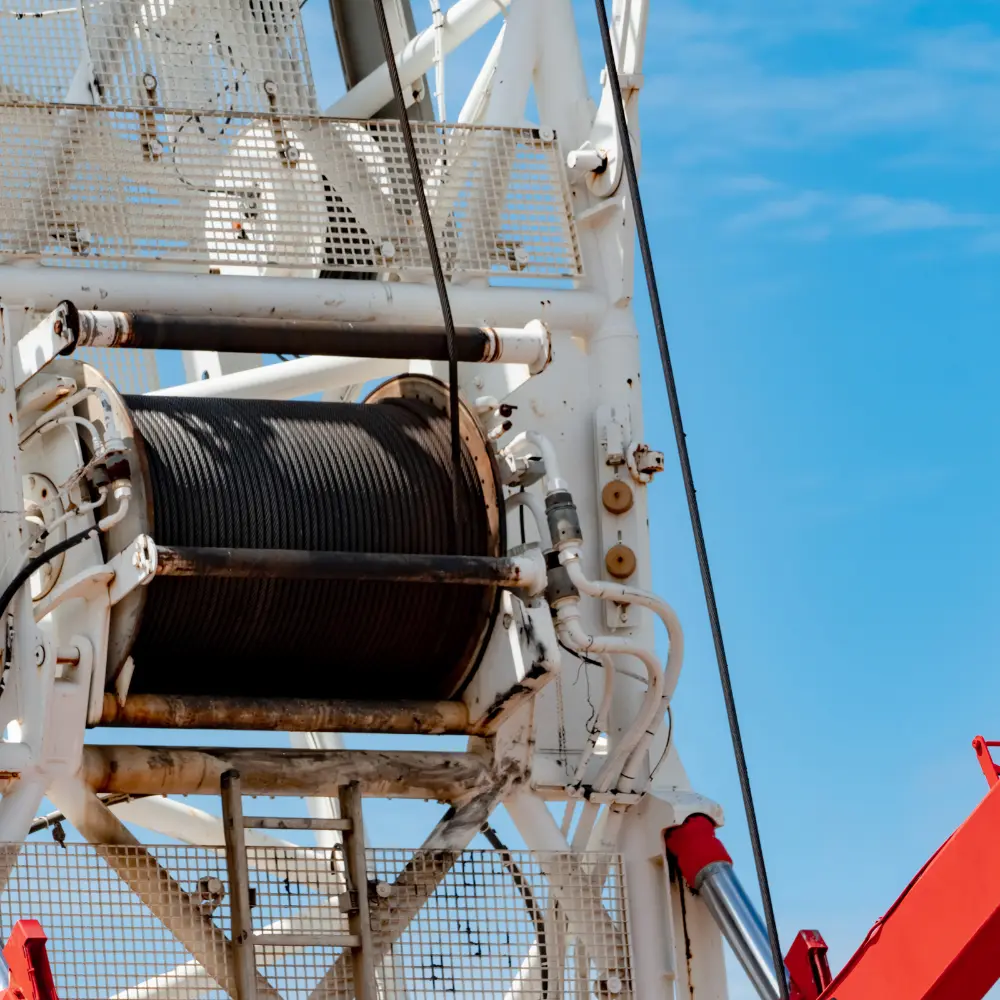 Crane wire ropes are essential components in heavy lifting operations and play a critical role across various industries, from construction to maritime. These ropes must endure extreme stresses and harsh environmental conditions, often resulting in significant wear and tear. One of the most common and detrimental issues these ropes face is abrasion. Abrasion compromises the performance and safety of the wire ropes and leads to increased maintenance costs and operational downtime.
Crane wire ropes are essential components in heavy lifting operations and play a critical role across various industries, from construction to maritime. These ropes must endure extreme stresses and harsh environmental conditions, often resulting in significant wear and tear. One of the most common and detrimental issues these ropes face is abrasion. Abrasion compromises the performance and safety of the wire ropes and leads to increased maintenance costs and operational downtime.
Understanding Abrasion in Crane Wire Ropes
Abrasion occurs when the surface of the wire rope rubs against external objects or when internal components of the rope friction against each other. This wearing down of material can lead to various problems, including reduced rope strength and potential safety hazards.
Types of Abrasion
- External Abrasion: This type of abrasion happens when the wire rope comes into contact with external surfaces such as drums, sheaves, or any part of the equipment it interacts with. For example, in a construction site, the wire rope might frequently rub against the edges of scaffolding or the sides of a building, leading to external abrasion.
- Internal Abrasion: This occurs within the rope, where the wires and strands rub against each other during operation. For instance, in high-tension lifting operations, the internal strands of a wire rope can experience significant friction, leading to internal wear.
Causes of Abrasion
Understanding the root causes of abrasion is crucial for preventing it. Several factors contribute to the abrasion of crane wire ropes, which can be categorized into external and internal factors.
- External Factors
- Environmental Conditions: Harsh environments like construction sites, ports, and offshore rigs expose wire ropes to abrasive particles like sand, dust, and salt. Cranes operating in coastal areas often encounter saltwater, which can accelerate corrosion and abrasion.
- Equipment Interaction: The frequent contact between wire ropes and the equipment they run over, such as sheaves and drums, can lead to significant surface wear. For instance, if the sheaves are not appropriately sized or aligned, they can create sharp bends or excessive friction points on the rope.
- Operational Practices: How wire ropes are handled and operated can significantly impact their lifespan. Poor handling practices, such as dragging ropes over rough surfaces or improper coiling, can cause unnecessary abrasion. Additionally, excessive bending and overloading during operations can exacerbate wear and tear.
- Internal Factors
- Design and Construction: The internal construction of the wire rope, including the type of core and strand pattern, influences how much internal friction occurs. Ropes with poorly designed cores or high-friction strand patterns are more susceptible to internal abrasion.
- Load Conditions: High tension and dynamic loads, common in heavy lifting operations, increase internal friction as wires and strands rub against each other. For example, a wire rope under constant heavy load in a mining operation will experience more internal wear than one used under lighter conditions.
Impact of Abrasion on Rope Performance
Abrasion can significantly reduce the operational life of crane wire ropes, leading to various critical issues. The most notable impacts of abrasion on rope performance include are as follows:
- Loss of Strength: As abrasion wears away the material of the rope, its overall strength diminishes. This reduction in strength means the rope can no longer handle its rated load, increasing the risk of failure during operations. For instance, a crane lifting heavy loads at a construction site with an abraded rope might suddenly snap, causing accidents and delays.
- Safety Risks: Compromised rope integrity due to abrasion poses severe safety hazards. Abraded ropes are more likely to fail unexpectedly, leading to catastrophic incidents, especially in environments where human lives and valuable equipment are at stake. For example, an abraded rope in a shipyard crane might fail while lifting heavy containers, endangering workers and causing significant damage.
- Maintenance Costs: Abrasion leads to more frequent inspections and replacements of wire ropes, driving up maintenance costs. Industries must invest in regular maintenance schedules to monitor the rope's condition and replace worn-out ropes before they fail. For example, maintaining and replacing abraded wire ropes in an offshore oil rig can substantially impact the overall operational budget.
Case Studies and Real-world Applications
- Offshore Cranes: Offshore cranes operate in some of the harshest environments, facing constant exposure to saltwater and abrasive particles. These conditions can quickly degrade wire ropes if not properly managed. Offshore operators have significantly extended rope life and reduced maintenance costs by implementing high-grade steel ropes with galvanized coatings. For example, a major offshore drilling company reported a 30% increase in rope lifespan after switching to galvanized ropes and a notable reduction in maintenance downtime.
- Construction Cranes: Cranes in the construction industry are subjected to varying loads and environmental conditions, often leading to severe abrasion issues. Compacted strand ropes with plastic-coated cores have proven effective in mitigating internal abrasion and enhancing overall rope durability. A leading construction firm found that using these specialized ropes could reduce rope replacements by 25%, improving project timelines and safety.
Addressing abrasion issues in crane wire ropes ensures safety, reliability, and cost-effectiveness in lifting operations. Industries can significantly enhance rope longevity and performance by understanding the causes of abrasion and implementing effective solutions. The ongoing advancements in materials and design will continue to drive improvements, supporting safer and more efficient operations in harsh environments.
Related Reading